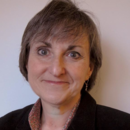Diversity in the built environment sector
Contents |
[edit] Introduction
On 27 October 2020, the BRE Trust and Penn State University facilitated a 'Future Focus' online session - Diversity in Positions of Influence: The Built Environment Sector. Dr Deborah Pullen of BRE Trust and Dr Esther Obonyo of Penn State University moderated a discussion on diversity in the built environment.
During the event, participants discussed the significance of diversity and its ability to foster more creative approaches to innovation.
[edit] Diversity as an impetus for change
Robert Crane, Associate Vice Provost for Global Programs at Penn State University, opened the session by talking about the glass ceiling in academia. Acknowledging its inherent influence on young professionals, he recognised that universities still have “a long way to go” in terms of diversity.
The first moderator, Dr Deborah Pullen MBE, Executive Director of the BRE Trust, then joined the session. Pullen introduced the broad concept of “considering people in what we create”, which must reflect diversity.
Pullen noted that organisations are becoming more active in their efforts to work with a broader societal group. Consequently, it is increasingly important to have a diverse workforce able to gauge and incorporate cultural differences appropriately. This type of multifaceted approach gives organisations the ability to respond quickly to the specific needs of a range of demographic markets.
[edit] Design bias
Maimunah Mohd Sharif, Executive Director of the United Nations Human Settlements Programme was presented in pre-recorded remarks. She pointed out the disparities between specific segments of the built environment sector and the population it is designed to serve. Sharif stated, 'the Royal Institute of Chartered Surveyors (RICS) reports that of more than 134,000 members worldwide, women represent only 15%. That proportion drops to 1% for those who are LGBTQ, BAME or people with disabilities.'
Additional statistics from the National Association for Women in Construction reveal that women make up about 9.1% of the construction industry in the US. And while about half the working population in the U.K. is female, women still make up just 13% of the construction sector’s workforce.
Since the construction sector is responsible for creating and upgrading the physical assets that support families and livelihoods to thrive, it is critical that wider experiences and opinions are included in the delivery of its workforce at all levels. Sharif noted that lack of diversity has historically resulted in gendered social and bias inequities. Using the example of public transport, she explained how gender bias has placed a disproportionate emphasis on infrastructure improvements in highways for private cars (more frequently owned or operated by men in working families) rather than public transport (which is more frequently used by women and other minorities in working families).
She optimistically noted that this is changing.
[edit] Attracting talent
The next presenter was Maria Coulter, BEM, who talked about diversity and the Roadmap for Change. She examined the industry’s efforts to attract new talent from sectors that have previously been underrepresented, and acknowledged a lack of receptiveness from some of those more established members of the profession.
She noted that SMEs and microbusinesses - which make up a significant proportion of organisations in the UK - have not been engaging either, although they might be more receptive under different circumstances. For instance, if larger contractors were leading by example, that could help to change attitudes. Until that time, Coulter feels these smaller entities will remain isolated, although she later brought up the point that some SMEs - particularly those small, family owned firms - may shy away from diversity simply because they prefer to 'run in their own circles and service their own communities'.
In addition to leadership from larger firms, SMEs and microbusinesses may need to see case studies that can demonstrate the benefits of a significant change in business practices.
[edit] Exclusion as the norm
While SMEs may actively exclude themselves from diversity initiatives, other instances of exclusion occur out of ingrained behaviours. Dr Amy Freeman, Director of the Penn State Millennium Scholars Program, raised the issue by asking the question - who decides which problems to solve?
This was picked up by Angela Mwai, Head of Human Rights and Social Inclusion for UN Habitat. Mwai stated that local authorities do not usually exhibit equal representation when selecting and solving problems for communities. This combination can result in two types of bias - first in priorities and second in appropriateness of execution. Unfortunately, this combination often delivers results that are not suitable for those people who use and need the services or solutions most.
[edit] The importance of role models
The second moderator, Dr Esther Adhiambo Obonyo, Global Building Network Director at Penn State University addressed the issue of exclusion by suggesting that people from within the majority can play a positive role to make those in the minority feel welcome.
Freeman added to the discussion by raising the importance of encouraging a generation of professionals representing a more diverse population. She noted that if no action is taken, the older generation will just be replaced by younger versions of themselves.
During the current transitional period, Freeman feels it is important for diverse role models to attract others like them to join the profession. She reluctantly acknowledged “the Black tax” in the United States, where ‘you do your work as an architect, architectural engineer or university administrator, but then you have this other job that White folks don’t do, which is “I’ve got to be the Black role model” and it’s exhausting.'
However, she recognises the importance of including marginalised people. Freeman says when there is diverse representation at the table, it broadens everybody’s perception and attracts even more diversity.
The session is available on YouTube from this link: https://youtu.be/50WvrH3UO74
[edit] Related articles on Designing Buildings
- Black excellence in UK civil engineering.
- BRE articles on Designing Buildings Wiki.
- BRE Trust.
- Building People.
- Charter for diversity and inclusion in construction and special report launched by CIOB.
- CIC Roadmap for Change.
- Creating more socially just and diverse cities.
- Diversity and inclusion in the construction industry.
- Diversity, equality and opportunities in the construction industry.
- Diversity in the construction industry.
- Ethnic minority owned businesses EMBs.
- LGBTQ+ Community.
- Reserved contract.
- Review of regulation of architects: call for evidence.
- Small and medium-sized enterprises SME.
- Social Enterprise Network Scotland SENScot.
- The architectural profession.
- The art of engineering is building for them, her and him.
- The role of transport in ending global poverty.
- Why a career in construction?
- Why we need to talk about race.









Comments
[edit] To make a comment about this article, click 'Add a comment' above. Separate your comments from any existing comments by inserting a horizontal line.